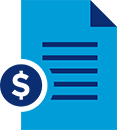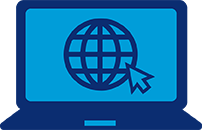employee savings investment plan (ESIP)

fraud alert!
Fraudulent attempts to steal identities and gain access to financial accounts are on the rise. See our cybersecurity tips for keeping your accounts safe.
cybersecurity tips
At Chevron you have not one, but two employer-sponsored plans – the Chevron Retirement Plan (CRP) and the Employee Savings Investment Plan (ESIP) – to help you save for retirement. The Employee Savings Investment Plan (ESIP) is a defined contribution (401(k)) plan; you contribute to the plan to save for your future.
- You must enroll in this benefit to participate. You can enroll at any time.
- You choose an amount to contribute from your paycheck each pay period and Chevron matches a portion of your contributions.
- You are immediately eligible to participate in the ESIP if you work for a participating company and are paid on the U.S. payroll.
- You can contribute on a before-tax, after-tax or Roth basis, or any combination of the three, subject to certain IRS limits.
- You decide how to invest the money in your account(s) by choosing from among the Plan's investment options.
- You always are 100 percent vested in your contributions, in the company matching contributions, and in all associated investment returns. This means you can take your savings with you when you leave.
- You may be able to rollover benefits from a previous employer’s qualified retirement plan or from an individual retirement account into the ESIP.
- Your beneficiary is eligible to receive the full value of your ESIP upon your death.
See the section(s) below for further ESIP details, plan documents, tools and resources.
base and variable pay
View the IRS and Plan limits, learn how CIP works with your ESIP deductions, and get help with deciding how much to contribute and how to change your contributions.

Fidelity offers financial and retirement planning guidance, tools and resources that can help you build your financial future.
plan highlights
You are immediately eligible to participate in the ESIP if you work for a participating company and are paid on the U.S. payroll.
- Reference the ESIP summary plan description to learn more about who is eligible to participate.
- You must enroll to participate; you can enroll at any time. Get started with enrollment.
You can contribute from 1 percent to 75 percent of your regular pay on a before-tax, traditional after-tax or Roth 401(k) basis, or any combination of the three, subject to certain IRS limits. You are always 100 percent vested in your own contributions. This means the money is yours and you can take it with you when you leave the company.
- Before-tax contributions reduce your current taxable income. You pay no federal income tax and, in most cases, no state or local income taxes on the amount you contribute and any associated earnings until they are distributed.
- Traditional after-tax contributions do not reduce your current taxable income, but they will not be taxed when they are distributed to you in the future. The earnings associated with traditional after-tax contributions, however, will be taxable when distributed.
- Roth 401(k) contributions are like traditional after-tax contributions. But the earnings on the contributions are not taxable when distributed, as long as you are at least age 59½ and have maintained the Roth 401(k) account for at least five years at the time of distribution.
Keep in mind that there are limits on the combined total of before-tax and Roth 401(k) contributions during a given year, including any you make to another employer’s plan. The IRS also limits the combined before-tax, traditional after-tax, Roth and company contributions to the ESIP each year. View the annual IRS limits.
Chevron supports your choice to save – and helps you save even more – by matching a percentage of your contributions. You are immediately vested in Chevron’s matching contributions. This means you own 100 percent of that money and can take it with you when you leave the company.
- If you contribute 2 percent of your regular pay, Chevron contributes an amount equal to 8 percent of your regular pay.
- If you contribute 1 percent of your regular pay, Chevron contributes an amount equal to 4 percent of your regular pay.
The company match is invested in the same way as your regular payroll contributions.
The plan offers an automatic contribution increase option that allows you to schedule future increases in the percentage amount you contribute.
- You choose a target contribution rate and an annual increase.
- You choose a time during the year when your automatic increase will occur.
- Annual increases will continue until you stop or change your election.
- You can’t set a limit, or cap, to your annual contribution increases. This means you’ll need to monitor them yourself and access your account to stop increases when you reach your target.
- Regardless of your contribution rate, contributions stop immediately if you reach the annual IRS limit during the year or if you reach the plan limit of 75 percent of your pay.
For example:
- If you want to increase your savings from 8 percent to 14 percent, you could schedule your contribution rate to automatically increase by 2 percent per year.
- After three years, you would reach your goal of 14 percent at which time you must login to your account and stop the automatic annual increases.
To sign up for the automatic contribution increase option, log on to NetBenefits and select Contribution Amount or call the HR Service Center and choose the menu option for the ESIP to talk to Fidelity.
To make a rollover into the plan, you must already have a balance, or be eligible to enroll in the ESIP. For instructions on how to complete a rollover to the ESIP, log on to NetBenefits and select Rollovers or call the HR Service Center and choose the menu option for the ESIP to talk to Fidelity.
While the plan is intended to help you invest for the long-term, you may borrow from your account and pay it back with interest. The following are some key loan provisions:
- Minimum amount: $1,000
- Maximum amount: cannot exceed the least of 1) 50 percent of your total vested account balance, less any outstanding loan balances; 2) $50,000, less your highest outstanding loan balance(s) from all qualified plans over the previous 12 months; or 3) the value of the account(s) used to fund the loan.
- Maximum number of loans at any one time: 2*
- Waiting period to apply for another loan: 30 days after payoff of previous loan.
- Repayment: up to five years for a general-purpose loan; up to 25 years for a principal residence loan.
- Application fee: $50 per loan, nonrefundable.
It may take several pay periods for your first loan payment to be deducted from your paycheck. Your loan confirmation letter will include estimated dates for your first and final payments.
To learn more, log on to NetBenefits and select Loans or Withdrawals or call the HR Service Center and choose the menu option for the ESIP to talk to Fidelity.
Chevron employees may withdraw money only under certain circumstances.
Age 59½ withdrawals. Once you reach age 59½, you can make withdrawals from your ESIP.
Disability withdrawals. If your claim for total disability benefits under the company’s Long-Term Disability Plan has been approved, you can withdraw money from your ESIP.
Hardship withdrawals. You can withdraw money from your ESIP for a serious financial hardship, including:
- Purchase of a principal residence.
- Unreimbursed medical expenses.
- Tuition and fees for postsecondary education.
- Prevention of eviction or mortgage foreclosure.
- Funeral expenses for a family member.
- Expenses for repair of damage to your principal residence.
- Before making a hardship withdrawal, you must first exhaust other options, including loans.
Military duty withdrawal. You can withdraw money from your employee before-tax and Roth accounts on a pro rated basis after 29 days on active military duty.
Tax implications: You will be responsible for paying any federal, state, local or foreign taxes on a distribution or withdrawal from before-tax accounts. A distribution or withdrawal of Roth 401(k) earnings is usually also taxable unless the initial Roth contribution was made more than five years ago and you are at least age 59½. Early withdrawals may be subject to a 10 percent federal penalty tax. To the extent required by law, Fidelity will make the appropriate withholding for tax purposes.
To learn more, log on to NetBenefits and select Loans or Withdrawals or call the HR Service Center and choose the menu option for the ESIP to talk to Fidelity.
When you retire or stop working for the company, you can generally receive a distribution of your account. You can decide what to do with your account balance from the following options:
- Leave your money in the plan, as long as your balance is more than $1,000. However, you must begin taking minimum required distributions when you reach age 72 (70½ if you reached age 70½ before January 1, 2020).
- Rollover your balance to an IRA or another employer’s plan. It may be necessary to roll over assets based on before-tax, traditional after-tax and Roth 401(k) contributions into separate vehicles. Before deciding whether to rollover your assets, you should consider the investment options, administrative fees and investment expenses of the new account or plan.
- Receive fixed-dollar installment payments.
- Receive partial distributions or a lump-sum payment.
Note: Special rules govern the taxation of distributions from your Chevron stock funds. For more information:
- Review Taking a Company Stock Distribution
- Talk to Fidelity by calling the HR Service Center and choosing the menu option for the ESIP.
Tax implications: You will be responsible for paying any federal, state, local or foreign taxes on a distribution or withdrawal from before-tax accounts. A distribution or withdrawal of Roth 401(k) earnings is usually also taxable unless the initial Roth contribution was made more than five years ago and you are at least age 59½. Early withdrawals may be subject to a 10 percent federal penalty tax. To the extent required by law, Fidelity will make the appropriate withholding for tax purposes.
Coronavirus-related distributions: Effective April 1, 2020, you may take Coronavirus-related distributions of up to $100,000 as long as you certify that were affected by the Coronavirus. You can pay taxes on the distribution over three years. Or you can repay the distribution to your ESIP within three years, and the repayments will not be counted toward the annual contribution limit. Distributions under this option will not be subject to tax withholding or the 10 percent early withdrawal penalty.
To receive a distribution: Talk to Fidelity by calling the HR Service Center and choosing the menu option for the ESIP.
All ESIP accounts are subject to certain fees:
- Plan administration fee. As a participant in the ESIP, your account is charged a quarterly fee to cover the cost of certain plan administrative activities such as legal, accounting, recordkeeping and participant communications. The quarterly fee may change from time to time, and is deducted generally within the first week after the end of the quarter. It is paid by deducting a proportional amount from Chevron Stock and all funds in which you are invested (excluding brokerage investments). The quarterly fee is currently $6.50 and appears as a separate charge on your statement.
- Investment management fee (excluding Chevron Stock). The investment options offered by the ESIP (excluding Chevron Stock) each charge participants an investment management fee to cover operating costs. This fee is paid through each funds’ expense ratio. More details are available in the fund prospectuses.
- Investment management fee (Chevron Stock). Investments in shares of Chevron Stock are charged a quarterly administration fee to cover fund manager expenses. This fee is charged pro rata to participants who hold any portion of their ESIP account in shares of Chevron Common Stock and/or the Chevron ESOP at the end of the quarter (typically less than $0.01 per $1,000 invested).
- BrokerageLink account fee. If you have a brokerage account, you will pay any commissions or other transaction costs associated with your brokerage account.
- Fidelity Personalized Planning & Advice fee. If you enroll in professional account management, there is a fee based on your account balance. The fee will not exceed 0.30 percent annually, and is deducted from your account balance each quarter.
- Loan initiation fee. If you request a loan, there is a loan initiation fee of $50.

You decide how to invest the money in your account(s) by choosing from among the Plan's investment options.

A beneficiary is a person or trust that you designate to receive certain benefits upon your death.

ready to enroll?
You are immediately eligible to enroll if you work for a participating company and are paid on the U.S. payroll. Enroll here.

If you're preparing to leave Chevron, learn about what happens to your benefits, what you need to do, and how to plan ahead.

ESIP restoration plan opens in new window
The Employee Savings Investment Plan Restoration Plan (ESIP-RP) is designed to provide benefits for eligible employees whose ESIP benefits are limited due to certain tax codes. Learn more about the ESIP-RP (intranet).
plan documents
The summary plan descriptions (SPD) provides specific details about your benefits, such as eligibility, covered services and participation rules. If there recent updates to the SPD since the last publication date, look for the summary of material modification (SMM) included in the very front of the book. If you have questions regarding a plan not listed or referenced on this website, contact the HR Service Center.
Chevron Employee Savings Investment Plan (ESIP)
Chevron Employee Savings Investment Restoration Plan
- Employee Savings Investment Restoration Plan (intranet only)
The documents listed below are called a summary of material modification (SMM). An SMM explains recent updates to your plan that are not yet captured or updated in your summary plan description (SPD) since the last publication date. Be sure to review the SMM for an understanding of important plan updates. If you have questions regarding a plan not listed or referenced on this website, contact the HR Service Center.
Chevron Employee Savings Investment Plan (ESIP)
- COVID-19 plan distributions, loans and required minimum distributions (CARES Act, April 1, 2020)
Chevron Employee Savings Investment Restoration Plan
- COVID-19 plan distributions, loans and required minimum distributions (CARES Act, April 1, 2020)
contacts
This communication provides only certain highlights about benefit provisions. It is not intended to be a complete explanation. If there are any discrepancies between this communication and the legal plan documents, the legal plan documents will prevail to the extent permitted by law. Oral statements about plan benefits are not binding on Chevron or the applicable plan. Chevron Corporation reserves all rights, for any reason and at any time, to amend, change or terminate these plans or to change or eliminate the company contribution toward the cost of such plans. Such amendments, changes, terminations or eliminations may be applicable without regard to whether someone previously terminated employment with Chevron or previously was subject to a grandfathering provision. Unless required by applicable law, there are no vested rights with respect to any Chevron health and welfare plan benefit or to any company contributions towards the cost of such health and welfare plan benefits. Some benefit plans and policies described in this document may be subject to collective bargaining and, therefore, may not apply to union-represented employees.
plan documentation
contact
Get phone numbers and websites for your benefits.
Looking for employment verification?

